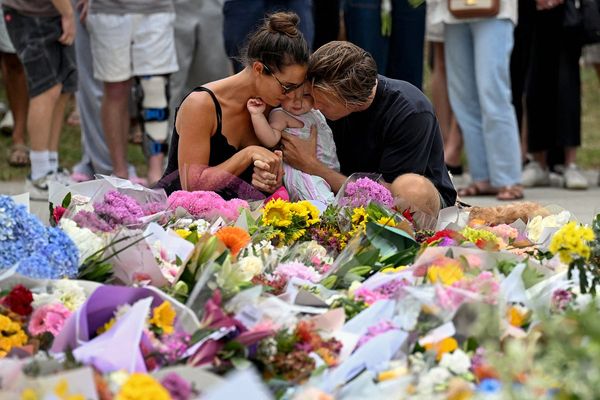
William Eggleston, the old master of American colour photography, took this picture at the funeral of the Mississippi bluesman Fred McDowell in 1972. Earlier, he had made a photograph of McDowell in his coffin, his head surrounded by white satin. The pair of them had become friends after Eggleston knocked on McDowell’s door one day and asked if he could shoot some film footage of him playing guitar. Here, Eggleston was at the back of the chapel, a dapper southern white man, who grew up in a plantation house, taking pictures. The young woman’s look seems to take in all of that oddness – Eggleston often elicited such gazes from strangers – and his camera flinches from none of it.
The film footage of McDowell was lost. When Eggleston later described it to a journalist, he said the playing had entailed “wandering, then surges of melody”. That description might also delineate the photographer’s methods. Eggleston, now 83, changed the landscape of the American imagination with his exhibition at the Museum of Modern Art in 1976; the accompanying book to that show, which introduced the artist’s saturated dye-transfer prints of the suburban south, was called William Eggleston’s Guide; it became exactly that for a generation of film-makers and photographers, in search of authentic American alienation.
This picture is included in a new book of Eggleston’s pictures, selected from 5,000 Kodachrome slides, many of them previously unseen, taken between 1970 and 1973. The Outlands comes with an introduction by Eggleston’s son, William Eggleston III, in which he attempts to define his old man’s place in the south, as the suburbs paved over history: “The subtext of what Dad documented was the loss of soulfulness, the loss of ‘real things’, the loss of skills needed to construct something well,” he writes. One way of looking at this picture is as a memorial to that soul.
William Eggleston: The Outlands is published by David Zwirner Books (£75). There is an accompanying exhibition at David Zwirner Gallery on West 19th street, New York, until 17 December







